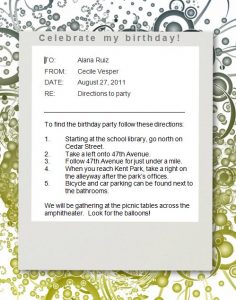Evidence is the student language performance that supports their ability to successfully complete the Can-Do Statements in LinguaFolio Online. Can-Do Statements are the heart of the portfolio system and show what students can actually do using the target language. Evidence provides the supporting documentation to showcase students’ ability to accomplish the Can-Do. For technical instructions on how students should upload evidence into their portfolios, please see our technology tutorials. There is also information regarding proficiency assessment that is included with those technology tutorials.
Evidence can take many forms, and a variety of media types can be uploaded to LinguaFolio Online, including text evidence, audio files, and evidence from Web 2.0 applications.
Help students think about evidence would best demonstrate their language ability. For example, to demonstrate mastery of a Can-Do Statement related listening or reading, students could upload a target language sample along with their own summary of the sample. As they progress in their language learning, students will become more aware that certain characteristics apply to different proficiency levels.
Below are proficiency descriptions and examples of evidence in English.
| NOVICE |
|
| INTERMEDIATE |
|
Novice Writing Evidence Exemplar
Novice-Mid: I can write lists that help me in my day-to-day life.
This picture shows a packing list for a camping trip and uses everyday vocabulary.
Intermediate Writing Evidence Exemplar
Intermediate-Low: I can express my opinion on familiar topics using a series of sentences with some details.
This student wrote their opinion about food, using complete sentences and a variety of vocabulary words.
Novice Reading Evidence Exemplar
Novice-High: I can understand everyday notices in public places.
This piece of evidence shows a poster for graduation. The student could then write a summary of the information to show they understand the content.
Intermediate Reading Evidence Exemplar
Intermediate-Low: I can find and use information for practical purposes.
To demonstrate understanding, the student could read these directions and tell someone else how to get to the party.
Novice Listening Evidence Idea
Novice-Mid: I can understand some words and phrases in simple messages and announcements in a a familiar setting.
Idea: The teacher could make simple announcement using familiar vocabulary. Students could demonstrate understanding by telling another student the teacher’s instructions.
Intermediate Listening Evidence Idea
Intermediate-High: I can understand factual information about everyday life, study-, or work-related topics.
Idea: Students could demonstrate understanding by summarizing the information presented in a straight-forward video.
Novice Presentational Speaking Evidence Idea
Novice-Mid: I can express my likes and dislikes using words and phrases.
Idea: A student could describe the sports she likes, using simple sentences and memorized phrases.
Intermediate Presentational Speaking Evidence Idea
Intermediate-Low: I can give a series of instructions.
Idea: A student could give someone instructions on how to feed his cat, using more complex sentences and a range of vocabulary words.
Novice Interpersonal Communication Evidence Idea
Novice-Mid: I can ask simple questions and give simple responses on familiar topics using words, phrases, and memorized expressions.
Idea: A student could ask someone else about the time, and the conversation might include short phrases and memorized expressions.
Intermediate Interpersonal Communication Evidence Idea
Intermediate-Mid: I can start, maintain, and end a conversation on a variety of familiar topics.
Idea: Students could the conversation discussing food, then shift topics, and then use more complex sentences and adapt to each other’s responses.




